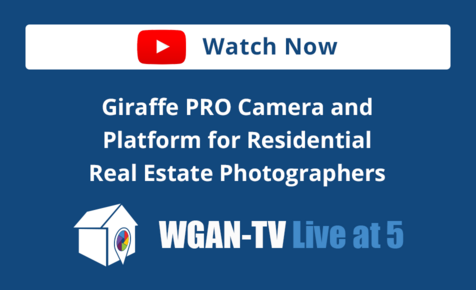Light meter2619
Pages:
1

|
ThreeDImaging private msg quote post Address this user | |
| Does anyone still use a light meter, or do u think cameras have developed so much that the computer within the camera does the job? Has anyone tried any of the apps for the iPhone/iPad? |
||
| Post 1 • IP flag post | ||

|
jfantin private msg quote post Address this user | |
| Hi @persin, When I use the Matterport camera I don´t have neither the need nor the possibility of using a ligh meter. When I use my Iris360 to do 360 shots or for Google StreetView projects I do use a light meter from my iPhone (the app is called myLighmeter - it is a free version). It is a basic application but good enough for my purposes (the Iris does not have complex adjustments). If I were to use a professional DSLR camera then perhaps I would use a professional light meter, but currently I am only using one shot 360 cameras for my business. Have a nice evening. Jorge |
||
| Post 2 • IP flag post | ||

|
ThreeDImaging private msg quote post Address this user | |
| Thank you Jjantin. I was looking into one to help me optimize the picture quality of the theta s. | ||
| Post 3 • IP flag post | ||

|
jfantin private msg quote post Address this user | |
| Well, I am not familiar with the Theta but I have heard that it has not a very good quality, although I think that it can be improved if you play a little with the setings. The Iris360, which is the camera I use, has two main controls: ISO and shutter speed (aperture is fixed to f4). So what I do is to read the light with my iPhone light meter and then adjust ISO up to the level that allows me to use a decent shutter speed, let's say 1/30 or faster. I noticed that shoting in full automatic with these one shot 360 cameras can produce low quality images. I hope this helps |
||
| Post 4 • IP flag post | ||
|
|
ron0987 private msg quote post Address this user | |
| @jfantin I just have a few questions, you said the Iris360 does not do good in the automatic mode, does it optimize the balance in each of the four lenses independent or is there just one sensor? You also said you set it manually since the camera shots 360 degrees simultaneously, where do you take your light reading in the brightest area or the darkest to get the best balance? Ron |
||
| Post 5 • IP flag post | ||

|
jfantin private msg quote post Address this user | |
| Ron Perhaps I should explain a little bit: the Iris360 does produce very good images for the purpose of web publishing and Google StreetView in average light conditions. It is in the low or challenging light conditions that the Iris360 could have some problems, but are solvable. While the Iris has a single sensor, it has the possibility of taking a single shot in HDR mode which means having 5 or 9 (depending if it is HDR or HDR+) different alternative shots (ie. -5ev, -4ev, -2ev, 0ev and +2ev). After that, during the processing stage the software automatically takes the best shot to make the stitching, taking care of differences in exposure in different directions. Having said that, when you shot in very challenging conditions, like a dark wood paneled place with wide open windows at noon, the final result could be not as good as if I were using a DSLR carefully metering for each shot. Now, answering your question, I use my light meter pointing to different directions and make some sort of average, letting the HDR feature to do its job. I have to say that 99% of the times the end result is good enough. What I look for is to see what is the best shutter speed that I can use. I always have in mind that for a better result I have to work between 1/30 and 1/125, playing with the ISO setting (going up in ISO, let´s say to 3,200, doesn´t affect the final result considering my needs) Bear in mind that I use the Iris360 mainly for Google StreetView and hence the quality requirements are not as high as in other activities. Best regards. Jorge |
||
| Post 6 • IP flag post | ||
Pages:
1This topic is archived. Start new topic?

















